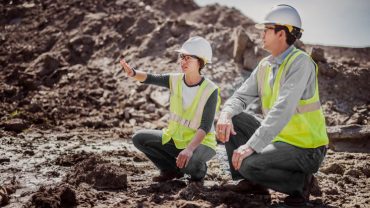The nose is an important sensory organ. The primary function of this important sensory organ is filtering the air entering the nasal cavity. The lining of the nose filters dust, germs and irritants. Any issue or condition affecting the nose can lead to problems such as temporary loss of sense of smell or snoring. Here are some common nose problems due to which people visit the doctor. Fortunately, all of these problems can be cured by undergoing surgery.
Deviated Septum or Injury to the Nose
A person’s septum has deviated when the nose appears crooked or off-centered. Primarily, there are two main causes that lead to the deviation of the septum. First, it can be due to birth defects during childbirth. The second cause is injury or trauma to the nose while playing sports, wrestling or car accidents. Due to bent septum, there is an unequal distribution of the nasal cavity that leaves the person gasping for air and increases the chances of sinusitis.
Sinusitis
It is a chronic condition in which the sinuses of an individual gets infected. Globally, it is one of the most common conditions that people suffer from. An individual experiences nasal congestion, pressure under the cheeks, and around the eyes, loss of sense of smell, frequent episodes of headaches. The symptoms of sinusitis make it difficult for the patient to breathe.
There are various factors that can contribute to both acute or chronic sinusitis- inhaling allergens, harmful viruses or bacteria, any respiratory illnesses such as asthma and some allergies.
Nasal or Sinus polyps
Polyps are non-cancerous growth that develops inside the nasal tissue lining or the sinus lining. Due to the repeated episodes of sinusitis, the sinus lining can swell and lead to the development of these polyps. These polyps obstruct the flow of air entering the nasal cavity and result in difficulty breathing. Also, these growths can prevent the proper drainage of the mucus from the nasal cavities or sinuses. This accumulated mucus gets infected and leads to sinus infections. However, if instructions are not followed properly, these polyps can grow inside the nose or sinuses.
Enlarged Turbinates
Turbinates are small structures found inside the nose that protect the nasal cavity by trapping allergens, pollutants or dust. Several times, these turbinates can swell or inflame due to inflammation. Also, in response to allergic reactions, these turbinates can enlarge. Enlarged turbinates can, in turn, trigger sinusitis leading to symptoms such as nasal congestion and headaches.
Types of Nose Surgery
There are various factors depending upon which the ENT Specialist decides the most appropriate treatment option. The following are the most common procedures that can cure the nasal conditions discussed above.
- Functional Endoscopic Sinus Surgery (FESS)- This is an outpatient procedure in which the doctor uses an endoscope with a camera on the end. Hence, the name Endoscopic Sinus Surgery. The doctor inserts this tool inside the nasal airways and the sinuses. Through the image projected by the camera, the doctor is able to remove the infected mucus and any other obstructions. Primarily, the objective is to improve nasal airways by opening up the nasal passages. People suffering from sinusitis, nasal polyps might have to undergo this.
- Balloon Sinuplasty- This is a more traditional cure for sinusitis. In this surgery, the ENT doctor inserts a small balloon catheter into the sinuses that inflate. Once the sinuses are larger, it is easier to drain the infected mucus. The doctor is able to widen the blocked nasal airways and alleviates symptoms such as stuffy nose, headaches or postnasal drip. Also, it is a safe procedure.
- Image-Guided Surgery- This type of surgery allows maximum results as it relies on a three-dimensional mapping system formed from CT scans. Patients suffering from severe forms of chronic sinusitis or nasal blockage are often recommended to undergo this surgery.
- Septoplasty and septorhinoplasty- To treat deviated septum caused due to birth deformity or any blow to the septum, the patient should consider septoplasty. In septorhinoplasty, the entire nose is repaired along with the septum. In these types of techniques, the surgeon reshapes, reduces or repositions the septum’s bone or cartilage. This removes the obstruction from the nasal airways and improves nasal drainage and breathing.
- Caldwell Luc Operation is a type of surgery that aims to widen the maxillary sinus. This allows the sinuses to drain the infected sinus easily. In this technique too, the surgeon used an endoscope to reach the sinuses.
- Turbinate Surgery reduces the enlarged turbinates that can cause an obstruction in the nose. Sometimes suffering from swollen turbinates complain difficulty breathing. There are various types of turbinate surgery-
Turbinectomy in which the doctor removes full or partial tissue
Turbinoplasty in which the doctor repositions tissue
Radiofrequency or laser ablation helps doctors to reduce tissue
Submucus resection surgery involves removing partial bone or cartilage
Conclusion
Nose problems are nothing to be worried about if patient decides to undergo surgery. These offer the most effective results compared to other non-surgical options. Visit an ENT doctor to know more about these procedures.












